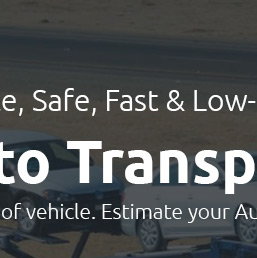 |
|
||||
 |
 |
 |
 |
||
 |
 |
|||||
 |
 |
 |
 |
 |
 |
 |
||
 |
 |
 |
 |
 |
 |
 |
 |
 |
 |
 |
|
 |
Understanding the Costs Involved in Shipping a Car: A Comprehensive GuideShipping a car can often feel like a daunting task, wrapped in layers of complexity and hidden fees that might not be immediately apparent. One of the foremost questions on anyone’s mind when considering this option is, “How much will it cost?” While there isn’t a one-size-fits-all answer, there are several factors to consider that can significantly influence the final price. By exploring these key features and highlights, you'll be better prepared to make an informed decision. To begin with, distance plays a crucial role in determining the cost of car shipping. As you might expect, the farther you need your car to travel, the more expensive it will likely be. Shipping a vehicle across a few states will obviously incur lower costs compared to transporting it from coast to coast. Moreover, the choice between domestic and international shipping can further complicate this factor, with overseas transportation involving additional charges such as import duties and tariffs. Another significant factor is the type of transport you choose. Broadly speaking, you have two options: open or enclosed transport. Open transport is more cost-effective, as it involves loading your vehicle onto an open-air carrier, which can carry multiple cars at once. However, this option does expose your car to weather elements and road debris. On the other hand, enclosed transport provides more protection as your car is shipped in a covered trailer, albeit at a higher price. The choice here boils down to your priorities regarding cost versus safety. The size and weight of your vehicle also affect the cost. Larger and heavier vehicles such as SUVs and trucks usually cost more to ship due to the extra space and weight they occupy. In contrast, smaller cars are generally cheaper to transport. It's important to provide accurate measurements and weight information when getting a quote to avoid unexpected surcharges. Seasonality is another aspect worth mentioning. Car shipping costs can fluctuate depending on the time of year. For instance, during summer and early fall, demand for vehicle transportation tends to peak, leading to higher prices. Conversely, shipping during the winter months may be less expensive, but it could also mean dealing with potential delays due to adverse weather conditions.
In summary, the cost of shipping a car is influenced by a multitude of factors including distance, type of transport, size and weight of the vehicle, timing, and additional services required. By carefully weighing these elements and conducting thorough research, you can ensure a smooth and cost-effective car shipping experience. While it might seem overwhelming at first, understanding these nuances can transform the process from a formidable challenge into a manageable task. https://www.shipyourcarnow.com/car-shipping-costs/
The average cost to ship a car ranges from 40 cents to $1.96 per mile, depending on several factors such as distance, vehicle size, and shipping method. The ... https://www.amerifreight.net/car-shipping-auto-transport-quotes-rates-cost-calculator
On average, the cost to ship a car ranges from $500 to $2,000, depending on various factors such as distance, vehicle type, carrier selection, and seasonal ... https://sgtautotransport.com/autoblog/transport-tips/car-shipping-costs
The average prices per mile shown above reflect market conditions as of January 2020. These rates are subject to change due to seasonal ...
|
